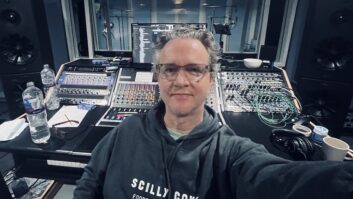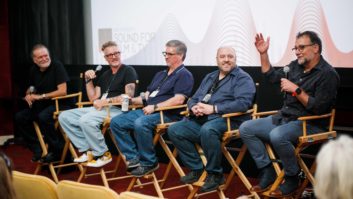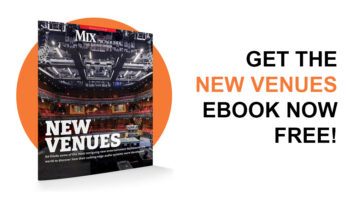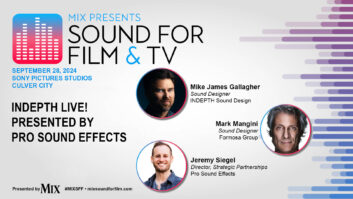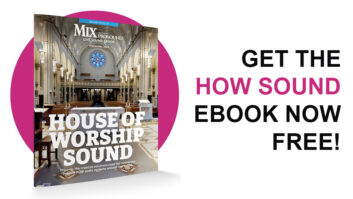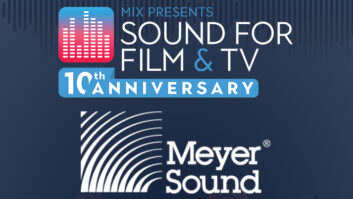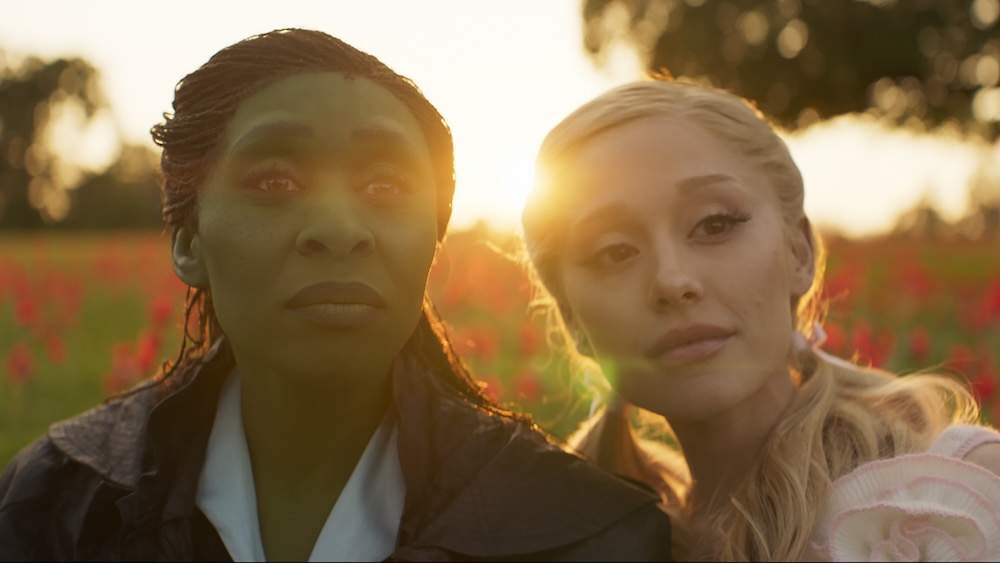
Don’t pass up Part 1!
MUSIC TIMING, EFFECTS TUNING
The pacing and transitions are seamless and smooth, and that’s wholly by design. According to supervising sound editor/sound designer/re-recording mixer John Marquis, there was a click track from pop to pop on every reel. There was also a click track fed to the actors’ earwigs on set. “Every sound was timed out to the tempo,” Marquis says. “Myron was cutting to a click as well. It feels free. It feels loose. It feels organic and intuitive, but everything’s synced. It’s very locked in and it’s beautiful.”

Marquis and supervising music editor Jack Dolman spent time on the tonalities of the practical effects, sound effects and sound design, working out tempos and pitches so that the sound design was supporting the music. “Our amazing sound designers Malte Bieler and Tim Walston tuned everything in the backgrounds so the world was like an instrument and the music just blossomed from the ambience, from the practical aspects of the storytelling, into these songs so that before you know it, you’re wrapped up in them,” Marquis says.
Nelson adds: “John’s team was timing and tuning the effects so they became part of the orchestra. You don’t notice that because it’s so beautifully presented, but if you analyze it, there are a lot of sounds in there that are all in harmony with the musical number. That takes a lot of work.”
Sound editorial and the final mix on Wicked took place at Warner Bros. Post Production Creative Services in Burbank, Calif., with Nelson and Marquis mixing on Stage 9 in Dolby Atmos sitting at a combo/two-position AMS Neve DFC and Avid S6 console.
RECORDING THE SCORE
Before the final mix, however, Nelson attended the orchestral recording sessions at AIR Studios Lyndhurst Hall in London, where scoring engineer Nick Wollage recorded a 90-piece orchestra for the songs and for John Powell’s score. “Listening to the orchestra in London, it became clear that this was going to be in a completely different dimension from the Broadway show,” he recalls. “It was elevated beyond belief. The movie soundtrack and score take Wicked to a whole new place.”
Before recording the orchestra, Nelson and Wollage discussed the best track layout for the eventual Dolby Atmos mix—one that would allow Nelson to fill the theater with orchestra without being distracting. He says, “I wanted it to feel like we were encased in the music, but I don’t put instruments all around the room. They’re very much in a standard orchestral layout.”
The orchestra was broken out into roughly five 9.1 stems. Nelson also received separate percussion stems and rhythm section stems of 5.1 bass, 5.1 keyboards and 5.1 synth tracks. Wollage prepped the orchestral material at AIR Studios before passing it on to music producer Greg Wells and his team, who created balances suitable for Nelson’s mix on the film.
“For each song, I had about 10 stems for music, and I had each of the individual vocals separate. The ensemble was a composite 7.0 track,” Nelson says. “On the dub stage, we made many adjustments in terms of how we played the ensemble against the vocals and the orchestra. All of this separation allowed me to push and pull things on the dub stage, but it wasn’t a tough balance because everything had been pre-worked, so we had a good starting place when putting it into the film.”
THE BACKGROUND OF OZ
Just as the ensemble vocals filled out the songs, the ensemble cast filled out the world of Oz. For the crowds in Emerald City, Shiz University and Munchkinland, Nugent Title recorded massive loop group sessions. “When Glinda addresses Munchkinland, the whole village is there to celebrate the witch’s death,” she says. “We needed the sound of children and people of every different age group. Jon [Chu] and I mapped out exactly how he envisioned it playing—the shape of the crowd, every reaction in each moment.”
They also crafted crowd reactions for the Ozdust Ballroom scene. The attendees stop talking as Elphaba enters the room; then they laugh and snicker at her for wearing the witch hat. The reaction changes again as Elphaba starts to dance. “This whole sequence of events takes about 10 minutes, and the crowd is shaped in a very deliberate way,” Nugent Title explains. “Again, Jon and I mapped out exactly what they were doing and when. Now they laugh at her. Now they applaud. It was very deliberate and took many passes.”
